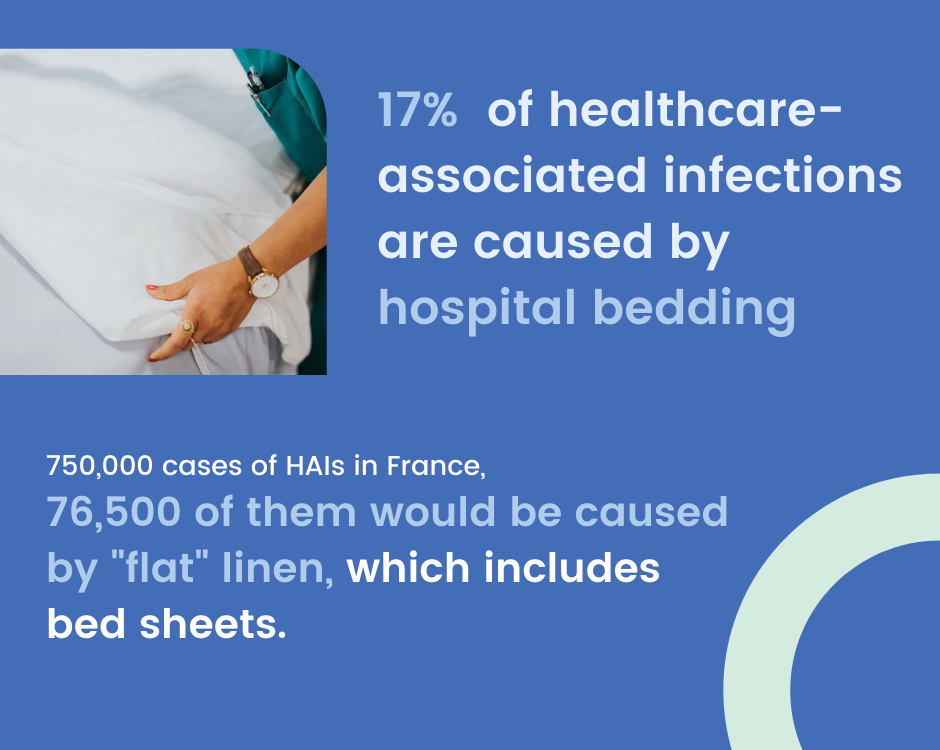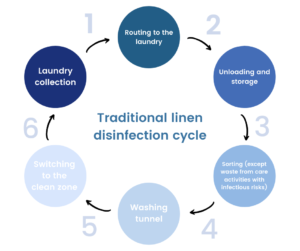It should be noted that bedding consumption in hospitals is consistent with its activity. In France:
- hospital bed consumes between 2 and 7kg of bedding per day
- A surgical operation consumes 5m² of operating bedding
- The national operating cost is estimated at 600 million/year2
Among the types of bedding, the fitted sheet is the most frequently soiled, contaminated and contaminating item.
Today, the majority of hospitals have “traditional” flat hospital bedding. Even if this bedding is comfortable and resistant to breakage, it is however more prone to be attacked by molds, turns yellow due to the light, loses its resistance to washing and is a source of contamination.
It also requires a longer changeover time (estimated between 10 and 15 minutes) and is difficult for both patients and healthcare professionals, especially in palliative care, geriatric, heavy orthopedic and oncology wards.






